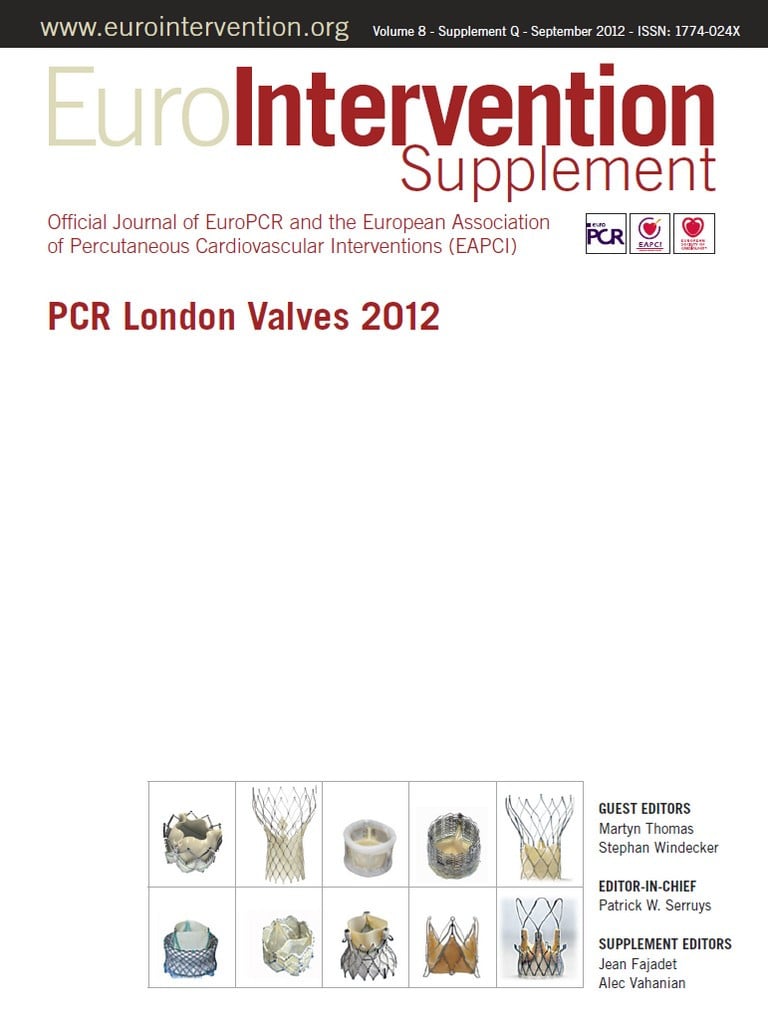![]()
Vascular access in TAVI
One single centre’s short- and long-term outcomes after TAVI: no differences between the transfemoral and transapical approach
Aims: We present the clinical outcomes of a single Italian centre - performing both the transarterial (TF/TI) and transapical (TA) approaches in high-risk patients with severe symptomatic aortic stenosis (AS) and with special emphasis on efficacy and safety over the mid- to long-term.
Methods and results: Between March 2008 and December 2011, transcatheter aortic valve replacement (TAVI) was attempted in 290 patients (mean age 81±6 years) unsuitable for conventional surgery based on a holistic assessment incorporating patient’s frailty, presence of comorbidities and operative risk. Data were collected prospectively and mortality tracking was achieved in 100% of patients with mortality status reported as of June 2012. Data from the patients who survived over 12 months were used for comparisons of the baseline and follow-up results. Logistic EuroSCORE was 20±11% in the TF/TI group and 22±12% in the TA group. A retrograde transarterial approach was used in 67.2% of cases, 181 transfemoral and 14 transiliac. In the other 32.8% of patients, TAVI was performed by the transapical approach due to severely diseased femoroiliac accesses or severely calcified aorta. Thirty-day mortality was 3.6% after TF/TI versus 2.1% after TA (p=0.723). During the course of this experience, we encountered 12 cases of vascular complications in the TF/TI group vs. none in the TA group (p=0.02). All of them were successfully managed by surgical or endovascular treatment. Widely feared stroke complications occurred at a low incidence within both the TF/TI and TA groups (four and two cases, respectively). TAVI accomplished significant mean aortic gradient reduction and improvement in valve area, which were sustained from perioperative to last echocardiographic assessment in both groups. Of the TAVI patients, 25.5% had a mild paravalvular leak (PVL), 3.1% a moderate PVL and none a severe PVL. More than 80% of them improved, or at least remained stable at one-year follow-up. Among patients who survived at least 30 days, 12-month survival was 88.6% for TF/TI and 81.7% for TA (p[log-rank]=0.1). At closing date, postoperative NYHA Class improved one class at least in both groups (p<0.001), although NYHA Class improvement at 30 days was significantly higher in TF/TI patients.
Conclusions: Our four-year experience confirms balloon-expandable TAVI efficacy and safety in high- risk candidates with end-stage AS. It further shows that both transarterial and transapical approaches are safe, although the transarterial technique is associated with certain access-site-specific complications that require highly qualified management, and early subjective clinical improvement is worse after transapical approach.

